The Messiah is always mentioned as a subordinate role, one that is seen more as a gift or symbol from Yahweh. The Messiah is described and labeled as strong, just, wise, and sinless. This king depends on God alone and brings a new name to the role of a king (vss. 32 ff; 18:6-9). This combination of Son of man and Messiah creates dominance that is unusual (Enoch 37-71; II Esdras; II Baruch). The time period the New Testament was written in, specifically the gospels, shows the Judaism beliefs coming out. Jewish people believed in prophecy and made their Jesus one who fulfills prophecies and suffers and dies. Jesus was viewed as someone who would raise up the Jewish people and being them a kingdom that takes away the power of the world and allow the Jewish people to have the power. The Messiah created a new type of king, one who cares for his people but also wanted to care for the world as a whole. This king did not stick to the side of this race; this Jewish King was a fill fuller of prophecy, but did not live up to the Jewish communities every wish.
Jesus was considered a Messiah or King of the Jewish people, ruling kings of Israel where called “anointed of Yahweh”. This also can be translated into ideal king of the future, the “anointed”one showing an expression of the inviolability of the king (1Sam. 24; 26; II Sam 1:14, 12, 19:21-H 19:22). Lamentations 4:20 turns the anointed one into “breath of our nostrils” or more easily understood as the life-giving power of God. The difference between the Messiah and an Israeli King was the role religion played; the king did not have religion at the front of the leadership. The Messiah would have two points to depart on; knowing the kingdom of David has its religious legitimation from the Nathan prophecy and that the Messiah has a son-father relationship with all it blessings. This Messiah “king” is the adopted son of Yahweh and provides the law and justice in the land. The Messiah is expected to rule forever and defeat all enemies.
The Messiah is always mentioned as a subordinate role, one that is seen more as a gift or symbol from Yahweh. The Messiah is described and labeled as strong, just, wise, and sinless. This king depends on God alone and brings a new name to the role of a king (vss. 32 ff; 18:6-9). This combination of Son of man and Messiah creates dominance that is unusual (Enoch 37-71; II Esdras; II Baruch). The time period the New Testament was written in, specifically the gospels, shows the Judaism beliefs coming out. Jewish people believed in prophecy and made their Jesus one who fulfills prophecies and suffers and dies. Jesus was viewed as someone who would raise up the Jewish people and being them a kingdom that takes away the power of the world and allow the Jewish people to have the power. The Messiah created a new type of king, one who cares for his people but also wanted to care for the world as a whole. This king did not stick to the side of this race; this Jewish King was a fill fuller of prophecy, but did not live up to the Jewish communities every wish.
0 Comments
John
B. Origins Records from the Gospels of Luke tell us that John was of Aaronic decent. Like Jesus, John’s life was prophesized about before he was even born. His father Zechariah was said to have an angel appear before him that told him to name his son John. It was later prophesized that John “shall be a nazirite to God”. A nazirite is someone who doesn’t drink, doesn’t cut their hair, and has no contact with the dead. Those who followed these rules did so in order to become closer to God. According to Luke, John was raised in a rural setting and was thought to be a Galilean. John was thought to be associated with the Essenes due to multiple parallels between his ideals and theirs. For example they both emphasized repentance, thought Israel’s rules should be monogamous, and both associate God’s spirit with water. Although the similarities were numerous, John didn’t follow along with all of their teachings, making researchers believe that he may have been with them for a while and then eventually broken off. C. Context It is thought that John baptized people in one of two locations, the Jordan River and the Aenon. Those being baptized believed that by repenting and coming to the river to get baptized they were getting a fresh start and could once again be seen as Abraham’s true descendents. John was associated with other men who were false prophets and summon people into the wilderness to preach. D. Message and Activities 1. John and Elijah- The way John presented himself and dressed made it seem as if he thought of himself as a prophet. Considering that the activity he was most well known for was baptizing, he was seen as John the Baptist. There are many correlations between John’s teachings and Elisha. They both reference the Jordan River, and believe in using water to be restored. John believed he was the prophet that was to come after Elisha so it was no wonder his ideas were parallel to Elisha’s. 2. John and Malachi- John’s teachings are also similar to the oracles of Malachi, both strongly disagreeing with divorce. Malachi also mentions a messenger that will prepare the way for the Lord. Many believed John to be the fulfillment of Malachi’s prophesy. 3. John and Isaiah- The most straightforward connection between John and Isaiah comes form the verse Isa 40:3, where Isaiah prophesizes a voice in the wilderness preparing the way for the Lord. There are also many verbal and thematic parallels between John and Isaiah’s writing. Words such as “coming”, “burning”, “anger” and “fire” show up in both John and Isaiah’s writing. E. Relation to Jesus Although there is some speculation on whether or not John baptized Jesus it is thought by researchers that it must be true due to the embarrassment principle. F. The Death of John John was arrested and beheaded for questioning Herod’s divorce. John’s efforts didn’t go unnoticed. Later gospel writer agreed with his ideas about baptism but emphasized that it is not right to be baptized with out repentance. The gospel writers believed that Herod killed John because he was afraid of what John’s influence over the people would do. The Gospel writers emphasize John’s idea of repentance while Josepus thought John was emphasizing morals in his teachings. Joespus and the gospels are telling similar stories about John, but just highlighting different parts of it. G. After John's Death John’s ideas and work are not forgotten. He is spoken about in later gospels and religious works. After his death some of his followers were “baptized in the name of the Lord Jesus”. CROSS
According to the New Interpreter’s Dictionary of the Bible (NIDB), the word cross has both a metaphoric and literal use (803). Literally, the word cross, in the New Testament refers to the instrument of Jesus’ death. Metaphorically, it refers to the lifestyle of the disciples, who followed Jesus in service, leading up to his crucifixion (Mark 8:34) (803). The NIDB separates the significance of the cross into three different categories including historical reality, theological significance, and spiritual/ethical significance. The first category, historical reality, refers to the humiliation and degradation that Jesus suffered to fulfill his duty to God (803-804). Cross, in this manner, also refers to Jesus’ reshaping the political norm that was established at the time through way of his death being symbolic of a martyr (804). Theologically, the cross is significant through three different areas. These include soteriology, Christology, and theology proper. 1. Soteriology deals with salvation. Salvation, as established by the New Testament, is accomplished by means of Jesus’ sacrifice on the cross. The death of Jesus, as noted by the early Christians, is described as being “for us” (804). 2. Christology deals with things that are of Christ and there interpretations. The cross, in this manner, is important because it shows Jesus’ obedience as the Son of God and reveals his identity as the Savior (804). 3. The last category, theology proper, refers to the doctrine of God. In this manner, the cross not only represents Jesus’ love but Gods love as well (804). Spiritually and ethically, the cross is an expression of Jesus’s love and the shape and source of salvation (804). CRUCIFIXION Crucifixion is a means of execution where a person is nailed to a cross and left to hang there until they die (806). It was first practiced in the eastern Mediterranean and Alexander the Great and his successors were noted as using the practice (806). It was usually reserved for “murderous or rebellious slaves” (806). It was also practiced by Jewish authorities, one such being Alexander Jamaeus who is said to have crucified a number of Pharisees (806). Those that were crucified were posted along highways, hills, and city gates. These were the places that were the most traveled or the most populated so that they could act as deterrents for others who considered rebellious of deviant activities and were carried to their locations by those that were condemned to die on them (806). Victims were usually beaten and then nailed to the cross by their hands and ankles (806). The practice was later used on Christians. Some cross and their individuals carried a titilus, which declared the name and the punishment of the criminal. The titilus for Jesus was written in multiple languages and stated “king of the Jews” (806). It was considered to be the “worst form of death” at the time (807). In Hebrew the, the abstract noun Kingdom (malkhuth) derives naturally from the term king (melekh), so that the fact of divine, royal power is conveyed. The biblical phrases “Kingdom of God” as well as “Kingdom of Heaven” focus of God’s role in shaping human experience (512).
A. Israel and the Kingdom Whether in present experience or in hope for the future, ancient Israelite literature celebrated the divine kingdom as the activity of God himself, his power in creating, shaping, and judging the world. As in the case of human activity, God’s action could be mapped in its dimensions through 1) time and 2) space, as well as in its 3) purpose, its 4) preferred medium of accomplishment and its 5) extent (513). The kingdom of God is behind the whole of life in all time, and beyond the comprehension of any living thing. God is to be acknowledged by all of humanity and the rule extends to every place and creature (513). God also judges all and it doesn’t matter whether you are wicked or love him. Even though the usual setting for Israel’s praise is in the temple, all of creation will come to acknowledge what is known there (Ps 145 10-13) ** “All your works shall give thanks to you, O Lord, and all your faithful shall bless you. They shall speak of the glory of your kingdom, and tell of your power, to make know to all people or mighty deeds, and the glorious splendor of your kingdom. Your kingdom is an everlasting kingdom, and your dominion endures throughout all generations.” Another main point is that the kingdom is a force of justice and will ultimately prevail. To be able to get into the kingdom it all depends on the satisfaction of God’s criteria. Along with all of this God will radiate out of Zion. “Israel is the nucleus of the larger group of those who recognize the kingdom is to radiate outward to include peoples beyond the usual range of Israel within its recognition” (514). B. Kingdom in the Gospels The meaning of God’s kingdom is evident in the synoptic gospels. In Matthew it is brought up when there is a warning against the “sons of the kingdom”. In Luke the saying is presented as part of discourse concerning salvation. “I shall not drink of the fruit of the vine again, until I drink it with you new in God’s kingdom” (Matt 26:29, Mark 14:25, Luke:22:18) (518). All throughout the synoptic Gospels we see where they refer to repenting for the kingdom is near and how we need to focus on being able to enter the kingdom. C. Jesus’ Message as Synthesis The whole reason for Jesus preaching is an announcement of God’s dynamic rule. Jesus talks in a “now” but “not yet” language when referring to the kingdom. Jesus teaches about how God will come and take his people up into the kingdom. The kingdom is not something that will come down to us. There are no authentic sayings where Jesus is clear about the description of the kingdom or the moment or method when it’s coming. Buddha- the title of Buddha is usually given to the historical founder of Buddhism, Siddhartha Gautama, although it can be applied to historical figures (both Buddhist and non-Buddhist) and many of whom may have been mythical. The dates the original Buddha lived is not certain, but it is believed that he died around the end of the 5th century. Due to varied information on his life, scholars are undecided on what is true. He was born into a noble family of the Sakya people, who lived near the borders of modern day India and Nepal. After getting married and having a son, he experienced some existential crisis. He was perceptive of mortality, and perceived the possibility of a solution to such problems. Buddha took up a wandering lifestyle of a homeless religious beggar. After studying under various religious teachers he adopted the practice of severe ascentism, for about 6 years. He found this to be ineffective and turned to more moderate practices, where he experienced a spiritual break through and was made a Buddha. He lived the rest of his life teaching his disciples what he had discovered, and advocating the development of meditative states. According to early Buddhists the Buddha offered his teaching in two levels; an introductory stage, where the simple model of pure life was offered, and a second stage where there were more advanced truths (known as the four noble truths). Buddhist concept of emptiness- it questions our belief that the individual has a separate self and helps individuals see themselves in a relationship that connects us with the rest of the universe. An example would be us saying that a cup is empty. But what is it empty of? It could be empty of water, but full of air. The concept of emptiness is seeing how all things are connected (think Lion King when Mufasa is explaining the circle of life to Simba). The Four Noble Truths
1. Life is suffering 2. The origin of suffering is attachment 3. The cessation of suffering is attainable (un-attaching from your senses and unmaking sensual craving) 4. The cessation of suffering is attained by following the Eightfold Path Karma: bringing upon yourself an inevitable result, whether good or bad, in this life or the next, through reincarnation Dharma: conformity to the religious law, custom, duty, or one's own quality or character The Bodhisattva Path is the path that Buddhists take when they have been given the spiritual push to become a true Buddha. The path is long and takes sometimes more than a lifetime to achieve. Buddhism has many different sections and was divided early into many different monastic ordination traditions. Mahayana is the most devout sect of Buddhism and they believe that only certain people can actually take the bodhisattva path but encourage all to take the journey to spiritual enlightenment. Modern Buddhism, or mainstream Buddhism, do not believe that everyone can become or needs to become a true Buddha. There are three types of enlightenment, which include the hearers, or arhats who listen and follow the teachings of Buddha. The “solitary” people, who are usually stricter in their spirituality, dedicate their lives to Buddha and the religion, most commonly known as Monks. The last type is the supreme and full enlightenment of Buddha, which is only obtained by few devoted Buddhists.
There are three stages of bodhisattva, which include the natural stage, or the life before the bodhisattva path begins. The second stage is the resolving stage, where the “vow” is first conceived and the third and final stage is the living in conformity stage where the bodhisattva lives with the vow and the path is declared irreversible. In Pali there are ten areas to perfect. Giving, morality, renunciation, wisdom, energy, patience, truth telling, resolute determination, loving kindness, and equanimity are the areas. In Dhammapala the list is shortened to six. These six include giving, morality, patience, energy, meditation, and wisdom. The degree of perfection distinguishes Buddha. The bodhisattva path is told by the Jataka tales and are known as the rebirth stories. Aspiring bodhisattva strive in compassion, awakening mind and meditative cultivation. Mainstream Buddhism has five paths to achieve the status of Buddha. The path of accumulation is the full arising of awakening mind. The path of preparation includes four stages, which are warmth, climax, patience, and highest mundane thing. The path of seeing, or vision, is where the bodhisattva becomes noble and is no longer an ordinary worldling and can control their own rebirths. The first of ten bodhisattva stages happens in this path, the stage of joy. The path of cultivation, or contemplation, includes the nine other bodhisattva stages. These stages are the stainless stage, luminous stage, radiant stage, difficult to conquer stage, face-to-face stage, gone afar stage, immovable stage, good stage and the cloud of dharma (teaching) stage. Each of the stages stands for something, in the same order they stand for morality, patience, energy, meditation, wisdom, skills and means, vow, power, and gnosis. The last three stages are seen as the pure stages. The last and final path of bodhisattva is the path of no more learning. The character, Gaspar (the second “wise-man”), was created by Christopher Moore to represent the historical figure Bodhidharma (moore, 440). Bodhidharma was an Indian patriarch of Buddhism that was said to have introduced China to Buddhism around 500 A.D. Bodhidharma was also reported to have been the founder of Zen school of Buddhism (ER 994). There are many debates on the authenticity of Bodhidharma and his creation of Zen school. The most reliable source for the life of Bodhidharma is the Xu gaoseng zhuan, written in 645 by Duaxuan. This source declares Bodhidharma to be a Brahman from southern India, and defines Bodhidharma as the patriarch for Zen school. After the establishment of Zen’s orthodoxy, the new school became the main trend of Chinese Buddhism and its “founder” Bodhidharma became legendary (994). The Zen Buddhist sect in Japan consists of three main schools, with several other movements based on Zen meditation, altogether consisting of about 100 temples and 200,000 followers (ER 9943). Today, Zen is admired for its spiritual practices, including strict discipline and contemplation of “riddles” (life’s questions). The training and practicing of the Zen school consists of sitting meditation and Zen master and student interaction through dialogue (9943). In Moore’s book, Lamb, Joshua experiences enlightenment, meaning (in his words): “I’ve let go of everything. I have achieved perfect freedom” (Moore 228). Through his enlightenment stage, Joshua learns to have compassion for his fellow humans and to be a bodhisattva (a savior) for his people. These ideas spring from the practices of Zen, that self- realization comes from meditation and contemplation (9944). Zen teachings also emphasize the importance of post-enlightenment thought; meaning that practice of Zen must not end at the time of realization, but should continue through life and be integrated in each aspect of living (9944). Although the teachings of Buddha could have been widespread throughout Christ's childhood, Buddhism did not reach China until about 500 A.D. and therefore could not have been taught to young Jesus during this time. Moore was purposefully historically inaccurate during this section of the book to allow for Joshua’s enlightenment. Throughout this section, Joshua learns the importance of loving all men (compassion), turning the other cheek, and being a leader for his people. These are all important aspects of Jesus’ life in the gospels and Moore wanted to include obvious and humorous historical inaccuracies in order to create new possibilities about the history behind Christ's teachings. The Wisdom of Bodhidharma
"A special transmission outside the scriptures, Not founded upon words and letters; By pointing directly to [one's] mind It lets one see into [one's own true] nature and [thus] attain Buddhahood." The Bhagavad-Gita, often shortened Gita, mean “The Song of the Blessed” is originally a poem in the larger philosophical work of the Mahabharata in India. The original work is as old as or older then early Buddhist works. Though a poem originally it has been added to and made a larger “epic” work. The poem is a story of two families warring over an area that they both have claims to. As the battle is about to ensue one of the leaders of the one family hesitates to attack at the sight of his cousins in the other’s ranks. He confesses his dismay to the god Arjuna, who happens to be his chariot driver. This blesses the man as Arjuna later revels himself. The book deals with some issues of the nature of God, having seeming conflicting issues but possibly just presenting God’s manifestation in two ways. The first seems to be on of the entire universe and above it in a spiritual way. The second is a God that works in the matter of the work and acts through the matter. This distinction seems loose between the two as God seems to control the world as a “puppet show” in some of the later works. God’s manifestation is not the only concept addressed, as the actions of people towards God are addressed as well. God’s grace is another topic and deems to be one of knowledge of God. If God is known, one will experience Divine grace, a concept also expressed in the Upanishads (another India religious text). The other major idea in the Gita is salvation. At the end of the story two forms of salvation are expressed. The first is a system of withdrawal from the world to seek knowledge. These seems to be the “knowledge of God” one of knowing the separation of the spiritual and the material. The other way of salvation, actually given to be superior, is to act on duty alone, to commit oneself fully to the teaching of the Gita. It is thought that the fist author had no influence of Buddhism or Christianity, but later redactors were influenced by these philosophies. The Bhagavad Gita (2.20-25)
Krishna to Arjuna on the Immortality of the Soul (Atman): The Atman is neither born nor does it die at any time, nor having been it will cease to exist again. It is unborn, eternal, permanent, and primeval. The Atman is not destroyed when the body is destroyed. O Arjuna, how can a person who knows that the Atman is indestructible, eternal, unborn, and imperishable, kill anyone or cause anyone to be killed? Just as a person puts on new garments after discarding the old ones, similarly Atman acquires new bodies after casting away the old bodies. Weapons do not cut this Atman, fire does not burn it, water does not make it wet, and the wind does not make it dry. It is eternal, all pervading, unchanging, immovable, and primeval. The Atman is said to be unmanifest, unthinkable, and unchanging. Knowing this Atman as such you should not grieve. The Herodian family played a significant role in Judean affairs from 37 BCE to 100 CE. Antipas, who was appointed the stratēgos of Idumea by Alexander Jannaeus, is the first member of this Idumean dynasty to be mentioned in history. His son, Antipater, succeeded him and headed the efforts to return Jannaeus’ son, Hyrcanus, to the throne after Hyrcanus’ brother seized it from him. Realizing the necessity of the political backing of Rome, Antipater took every effort to prove his loyalty to Rome. This loyalty paid off and the power of Antipater and his family continued to increase with time; Antipater now holding most of the power of the throne.
Herod I, Antipater’s son, was appointed governor over Galilee at the age of 25 and quickly came to the attention of Rome. Once the east came under the control of Marc Antony, Antony appointed Herod and his brother tetrachs: Phasael over Judea and Herod over Galilee. Shortly after, Antigonus, with the support of Lysanuis, began a takeover where he captured Hyrcanus and was named king. In response, Herod gathered the support of Antony and Octavian, with the promise of being named king of the Jews. Together they took over Jerusalem and Antigonus was executed. Herod began his rule as king of the Jews in 37 BCE. Following Herod’s death and decades of his “iron rule”, the country was in an uproar. Herod’s will was to divide the country among three of his sons: about half to Archelaus and the other half split between Antipas and Philip. Archelaus adopted the title “Herod” for his short reign, but was eventually dismissed for excessive brutality. Though Judea became a Roman province, the Herodian family maintained an active role in politics. Antipas, Archelaus’ younger brother, also adopted the title “Herod,”however, as with Archelaus, the Gospel references which make this title synonymous with king are incorrect. Antipas ruled for forty-three years, during which the ministries of both Jesus and John the Baptist took place. At the request of his step daughter, Antipas ordered the execution of John the Baptist. The Gospel of Luke suggests that Antipas may have also heard the trial of Jesus, although this is not historically sound. Eventually, Antipas’ army was defeated, many believe as retaliation for the execution of John the Baptist, and Antipas and his wife were exiled to Gaul in 39 CE. Vedānta is a word that is used in Indian culture (specifically Hinduism) to describe Indian philosophy about the relationship between atman, and Brahman. Many consider Vedānta to be “the philosophy of Hinduism.” The use of the word Atman is referring to one’s true self while Brahman refers to a supreme reality or the Absolute (God). Brahman is a general Hindu term that is used in philosophy to describe pretty much everything; God as a whole, reality, earth, time, space, energy, etc. It’s an eastern culture terms that can be hard to wrap your mind around mostly because western culture typically doesn’t think that way. Also, the term Vedānta is a term that comes specifically from the Veda (knowledge) text that is referred to as the Upanishads that date back to 800BC. The older view of Vedānta is one where many authors and schools contributed to the thoughts and creation of the Vedānta. More recently though, Vedānta is more of a “folklore” or “spiritual” since that has been derived from the Upanishads. The Upanishads are old texts in Hindu that don’t have a specific author or authors although there is a list of main authors that contributed to most of its creation. Most of the texts have been passed down through oral traditions over time. The majority of the texts are believed to be written from the Pre-Buddhist time to around the first centuries BC, however, some were even written up to the medieval period. Isa Upanishad
I All this, whatsoever exists in the universe, should be covered by the Lord. Having renounced (the unreal), enjoy (the Real). Do not covet the wealth of any man. We cover all things with the Lord by perceiving the Divine Presence everywhere. When the consciousness is firmly fixed in God, the conception of diversity naturally drops away; because the One Cosmic Existence shines through all things. As we gain the light of wisdom, we cease to cling to the unrealities of this world and we find all our joy in the realm of Reality. V It moves and It moves not. It is far and also It is near. It is within and also It is without all this. It is near to those who have the power to understand It, for It dwells in the heart of every one; but It seems far to those whose mind is covered by the clouds of sensuality and self– delusion. It is within, because It is the innermost Soul of all creatures; and It is without as the essence of the whole external universe, infilling it like the all–pervading ether. VI He who sees all beings in the Self and the Self in all beings, he never turns away from It (the Self). Chandogya Upanishad 6.13.1-3 Uddalaka said “Put this salt in water, and come to me tomorrow morning.” Svetaketu did as he was bidden. The next morning his father asked him to bring the salt which he had put in the water. But he could not, for it had dissolved. Then said Uddalaka: “Sip the water, and tell me how it tastes.” “It is salty, sir.” “In the same way,” continued Uddalaka, “though you do not see Brahman in this body, he is indeed here. That which is the subtle essence–in that have all things their existence. That is the truth. That is the Self. And that, Svetaketu, THAT ART THOU.” |
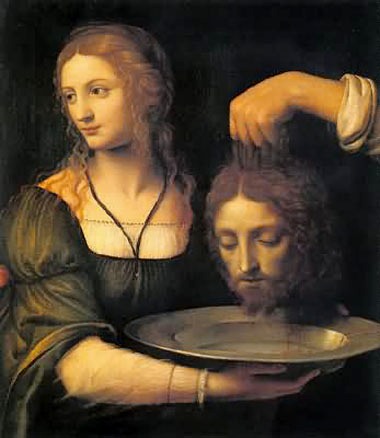
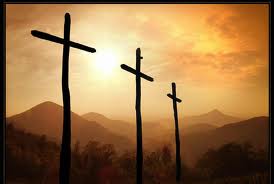

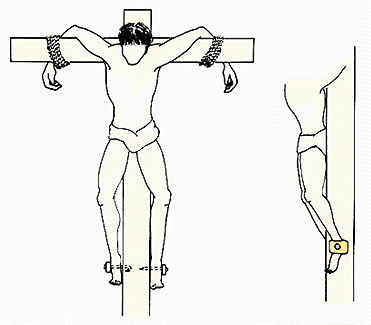
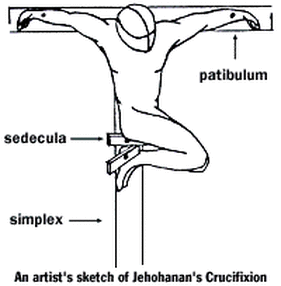
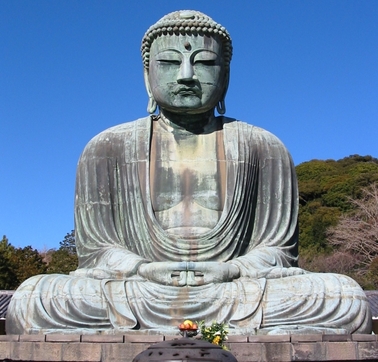

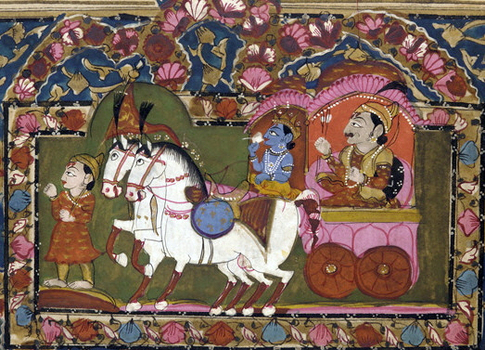
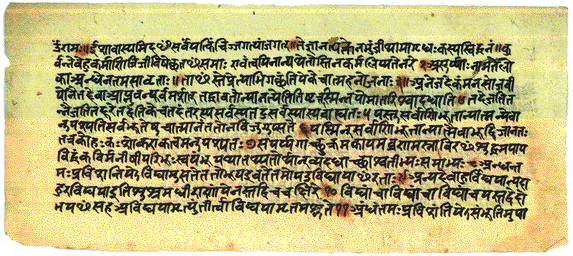
 RSS Feed
RSS Feed